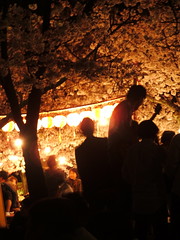In the midst of all the hype about the latest Twilight movie, my friend Kate recently wrote an article for Marie Claire that takes a look at the least sexy vampires to grace the silver screen. I think she's on to something here, but I'd like to take it one step further and give my (unsolicited) opinion about the whole vampaphile phenomenon.
While I'd like to simply rant about what horrible books the Twilight series are, they are merely a pawn in a much larger game that seeks to sexy-fy the vampire. To understand why this annoys me so, you'll have to take a look at the history of vampire lore and the very core of what exactly a vampire is.
To get to the root of the vampire, we have to discuss some pretty nasty stuff, so this is fair warning that what you're about to read might make you throw up in your mouth. If you think you can stomach it, do come along with me as I lead you through the magically un-sexy world of...
VAMPIRES 101
Virtually every human culture has myths and folklore surrounding the notion of undead human corpses, and the drinking or sucking of blood is associated with demons and monsters the world over, but the vampire as we know him originates in Eastern Europe and his classic traits arise from a charmingly medieval misunderstanding of the spread of disease and the decomposition of the human body.
In medieval Europe, as human populations began to explode and those humans became increasingly specialized in their trades, the rise of early urbanization meant that not only were there more people than ever before, but that they were also living in closer quarters than they ever had. Close proximity to each other (and each other's waste -- ew!) led to the rampant spread of disease. The most nefarious of these was, of course, The Black Death of the 14th century, but other smaller epidemics were a common cause for panic, and as we know, humans are at their most creative when they are ignorant and panicky, so this is a period rich in folklore and superstition.
One of the delightful off-shoots of so many folks dying so quickly was the frequent use of mass graves, and because those graves were often reopened to add fresh bodies to the heap, those doing the burying were learning a lot more about decomposing human bodies than ever before. Now if we imagine ourselves to be a medieval chappy reopening a mass grave, we might expect that the bodies inside -- which haven't been eating or drinking since their deaths -- would be drying out and shriveling up and turning to bones, much the way we dry out and shrivel up if we don't eat while we're living, but that, unfortunately, is not the case. Instead, the bodies are swollen and, horridly, leaking blood and other fluids from their noses and mouths -- mouths which are gaping open to reveal hideously long teeth. Even in cases where the bodies were wrapped in burial shrouds, the fluids leaking from the mouth would have quickly decayed that portion of the shroud, leaving that blood-curdling image of the gaping black mouth and the fangs. Modern science tells us that this is not the stuff of nightmares but actually, albeit completely nauseating, the natural changes that a human body goes through as it decays. The rotting corpse swells with gases and fluids, which the pressure forces out any openings it can find, and as the gums dry and recede, the teeth appear to grow longer and sharper -- disgusting, but all totally normal, particularly when the bodies aren't treated or embalmed in any way before their burial.
However, our poor medieval chappy doesn't have the advantages of our modern education and so what he sees, understandably, is a body that is apparently engorged with blood. Mix that with the fact that around him, seemingly healthy people are quickly succumbing to some mysterious condition that is leaving them pale and sapped of life, add a dash of that ingenious human creativity, and you come up with the not-so-irrational notion that the dead bodies are rising from the ground (under the cover of night, obviously, since we never see them), feeding on the blood of the living, and then tucking themselves cozily back into their graves while their victims grow steadily more ill and eventually join them.
Everyone knows you shouldn't kiss a plague rat on the mouth, so why would you make out with a plague corpse?
Needless to say, the medieval vampire is not exactly a sex symbol, except perhaps for some rather troubled necrophiliacs...
... That was too far, wasn't it? Sorry.
Anyway, from these rather stomach-turning superstitions comes the classic image of the vampire, who first takes a tangible form in Polidori's The Vampyre and then more famously in Bram Stoker's Dracula. The character of Count Dracula, who is based not only on medieval superstition but also on the very real person of Vlad the Impaler, is the image from which all modern vampires spring, and I believe, in its move toward a vampire who is cunning and sophisticated, takes the first step toward the "Vampires are Sexy" notion.
If you are a fan of the Twilight "saga" (We'll discuss the bastardization of the word "saga" some other day) or of vampire stories in general, I absolutely insist that you read Stoker's classic tale of horror. You see, while I would not describe Stoker's count, his brides, or the hapless Lucy as sexual, I think this is where some sensuality creeps into the vampire story -- not in the sense of victims being attracted to vampires, but in the sense of vampires being attracted to their victims. Dracula doesn't entrance Lucy with his smoldering good looks or his bad-boy attitude; he has to literally entrance her (as in "put into a hypnotic trance") to get close to her. Jonathan is perhaps an even better case; he is completely repulsed by Dracula's brides who are pale, fangy, and ugly. The attraction here is completely from the vampires' side, much the way that you feel a magnetic draw to a juicy steak, but the steak, presumably, doesn't think you're that cute. Somehow modern vampire stories make the completely irrational leap to Bella the Steak thinking Edward the Carnivore is hot.
Bella the Steak says, "Ooo, I'd like to get me eaten by that carnivore!"
Another aspect of the original vampire lore that is crucial to the Dracula story but somehow conveniently disappears in modern vampire stories is that the vampire is not human. Now let's all repeat that together, boys and girls: Vampires are not human. They are soulless corpses that used to be human but are now possessed by demons. That's right: DEMONS. Count Dracula the Vampire has no connection to the late Count Dracula the Person and does not, to any degree, retain his human personality. If you'd like proof of this, consider Lucy's harrowing transition. She is clearly NOT Lucy after her transformation; while she knows Dr. Van Helsing and the others, she does not retain any of her emotional connection to them. Her fiance goes from her dearest love to a juicy steak in the blink of an eye, and she goes from our sweet little victim to the undead corpse stalking children in the park. It is the destruction of the vampire -- by staking it through the heart, stuffing its mouth with garlic, decapitating it and placing its head between its feet (all very sexy, by the way) -- that exorcises the demon and allows the deceased person to finally R.I.P.
The key to modern vampire stories, such as Twilight and Interview with a Vampire, is the sympathy the audience is supposed to feel for the vampire, based mostly on the idea that the vampire is just some poor victim who, like Louis or the Cullens, thinks killing people is wrong and either feels regret for eating people or eats rats/deer/rare steaks instead. These modern stories cast vampirism as a sort of unfortunate madness, something we shouldn't blame the vampire for and something he feels just awful about and wishes he could escape. But Dracula feels as much regret about eating Lucy as you do about that steak. Possibly less.
To Anne Rice's credit, Lestat is at least nasty and ruthless enough to repulse us, but she still misses the mark here because even Lestat has way too much personality for a vampire. He's riddled with all kinds of human emotion and desperately desires companionship, which he gets by way of transforming Louis (with a lot of gay overtones). Even in his absolutely most terrifying moment when he returns from the swamp looking decidedly un-sexy, he still plays the frickin' piano.
"Yes, Mom, Louis is my eternal companion, but I like to eat chicks -- I swear!"
So when we take the vampire and 1) make him good-looking so he can seduce us, 2) grant him a human personality and soul so that we can forgive him for all that neck-biting and life-force robbing, and 3) give him a conscience so he doesn't bite necks and rob life forces in the first place, what are we left with?
Well, let's see: we now have a regular guy who's not only going to look hot for eternity but is also going to live for eternity, which makes him... O! NOT A F'ING VAMPIRE. Now he's just a hot guy who's never gonna die -- who wouldn't want to hook up with that? And why would Bella not want him to suck on her neck so she can be hot and never die too? Sounds like a deal to me. Meyer even eliminates all the classic drawbacks to being a vampire -- like not being able to go out in the sun or eat garlic or look at crosses or be around holy water -- simply by having Edward "poo-poo" them. The only downside seems to be that you occasionally make a fool of yourself at birthday parties and leave everyone feeling awkward, but come on, that's not a vampire issue, Jasper -- we all do that! And on top of that, Meyer's vampires have superspeed and superstrength and other special powers. They are Superman sans the kryptonite. And somehow we're supposed to believe that these are poor, tortured souls who just wish so much that they weren't vampires. What a stupid fricking premise for a movie a whole mother'lovin' series of movies.
Meyer and the other proponents of the "vampires are sexy" myth seem to think they're a bit ingenious for turning centuries of lore on its head but I, like the venerable Miss Prism, "am not in favour of this modern mania of turning bad people into good people at a moment's notice" (The Importance of Being Ernest). Where are Arthur and Jonathan and Dr. Van Helsing while we're mooning over Dracula? Are our heroes now so few and so far between that we have to fall in love with the monster?
Well, have fun making out with your plague corpse, Bella, but I for one am going to stick with humans, however mortal they may be.
All this happened, more or less...
My name is G and these are the true stories of my adventures.
Thursday, July 1, 2010
Know Your Roots: The Vampire Rant
by
G
at
4:21 PM
![]()
Labels: books, folklore, literature. dracula, rants, stephanie meyer, twilight, vampires
Subscribe to:
Post Comments (Atom)





 Stumble It!
Stumble It!






1 comment:
i'm gonna refer to edward as "plague corpse" from now on.
Post a Comment